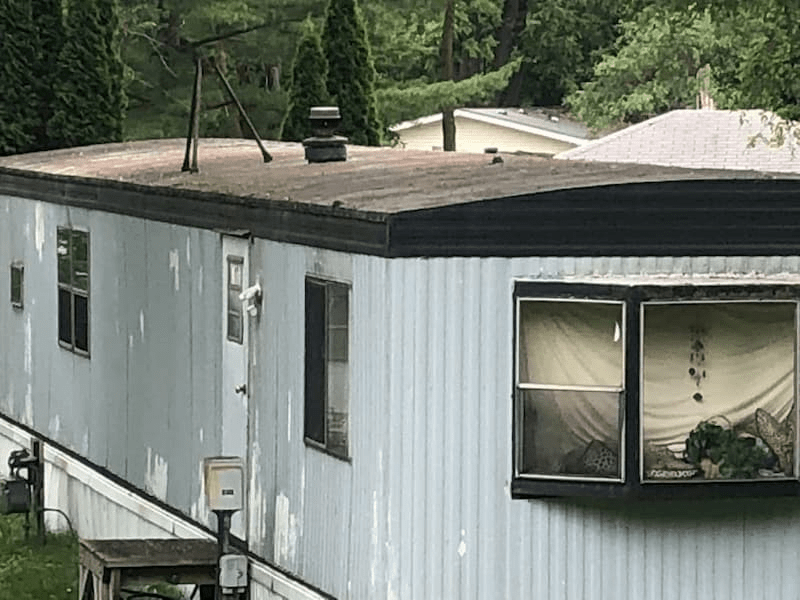If you’re considering upgrading your single wide trailer with a metal roof, you’re on the right track. Metal roofing offers durability, energy efficiency, and a modern aesthetic that can enhance the overall value of your trailer. In this article, we’ll explore the benefits of installing a metal roof on a single wide trailer, the installation process, and key considerations to ensure you make the best choice for your home.

Why Choose a Metal Roof for Your Single Wide Trailer?
Benefits of Metal Roofing
- Durability: Metal roofs are known for their long lifespan, often lasting 40 to 70 years compared to traditional asphalt shingles which typically last 15 to 20 years. They are resistant to extreme weather conditions, including high winds, heavy rain, and hail.
- Energy Efficiency: Metal roofs reflect solar heat, which can reduce cooling costs in the summer. This reflective property can help maintain a more stable indoor temperature, potentially lowering your energy bills.
- Low Maintenance: Unlike asphalt shingles, metal roofs require minimal maintenance. They don’t crack, warp, or become brittle over time, and they are resistant to mold and mildew.
- Aesthetic Appeal: Metal roofs come in various styles and colors, allowing you to choose a design that complements your trailer’s appearance. Whether you prefer a sleek, modern look or a more traditional design, there are options available to suit your taste.
- Eco-Friendly: Many metal roofs are made from recycled materials and are themselves 100% recyclable. This makes them an environmentally friendly choice compared to other roofing materials.
Read too: How To Replace Roof Shingles That Blew Off: A Comprehensive Guide
Installing a Metal Roof on a Single Wide Trailer
Preparation for Installation
- Assess the Existing Roof: Before installation, inspect your current roof for any damage or structural issues. It’s crucial to address these problems to ensure the metal roof can be installed correctly.
- Choose the Right Metal Roofing Material: There are various types of metal roofing materials, including:
- Steel: Known for its strength and affordability.
- Aluminum: Lightweight and resistant to corrosion.
- Copper: Offers a distinctive appearance and longevity but is more expensive.
- Measure and Order Materials: Accurate measurements of your trailer’s roof are essential to ensure you order the correct amount of metal panels and other necessary materials. Consult with a roofing professional to get precise measurements.
Installation Steps
- Remove the Old Roofing: If necessary, remove the existing roof materials. This step might not be required if you’re installing the metal roof over the existing roof, but it’s crucial to ensure the underlying structure is sound.
- Install Underlayment: Lay down a waterproof underlayment to provide an extra layer of protection against leaks. This is especially important if you’re installing the metal roof over existing shingles.
- Install the Metal Panels: Begin at the bottom of the roof and work your way up. Metal panels are usually installed in overlapping rows, secured with screws or clips. Ensure that each panel is properly aligned and fastened to avoid gaps and potential leaks.
- Seal and Flash: Install flashing around roof penetrations such as vents and chimneys. Flashing helps prevent water from seeping into the roof structure. Seal all joints and seams with roofing sealant to ensure a watertight installation.
- Finish the Edges: Install edge trim and ridge caps to give the roof a polished look and to provide additional protection against the elements.
Hiring a Professional vs. DIY Installation
Installing a metal roof on a single wide trailer can be a complex process. While DIY enthusiasts may be tempted to tackle the project themselves, hiring a professional roofing contractor can ensure a high-quality installation. Professionals have the expertise, tools, and experience to handle the job efficiently and correctly.
Key Considerations for Metal Roof Installation
Cost and Budget
Metal roofing can be more expensive upfront compared to traditional roofing materials. However, its longevity and low maintenance requirements can lead to cost savings over time. Consider your budget and weigh the long-term benefits when making your decision.
Weather and Climate
Metal roofs are well-suited for various weather conditions, but it’s essential to choose a material that performs well in your specific climate. For example, aluminum is highly resistant to corrosion, making it a good choice for coastal areas with high salt content in the air.
Local Building Codes
Check local building codes and regulations before starting your project. Some areas may have specific requirements for roofing materials or installation methods. Ensure that your chosen roofing material and installation method comply with these regulations.
Aesthetic Preferences
Consider the overall look of your trailer and how a metal roof will fit into the design. Metal roofing comes in a range of colors and styles, so choose one that enhances the appearance of your trailer while meeting your functional needs.
Conclusion
Installing a metal roof on a single wide trailer is a smart investment that offers durability, energy efficiency, and low maintenance. By understanding the benefits, installation process, and key considerations, you can make an informed decision and enjoy the many advantages of metal roofing. Whether you choose to tackle the project yourself or hire a professional, a metal roof can significantly enhance the value and functionality of your single wide trailer.



Leave a Reply